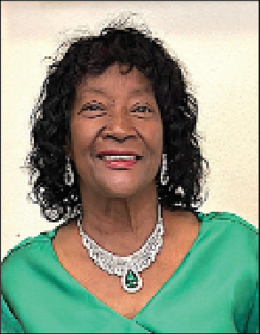Trial of reputed Klansman moves into final phases
Published 3:43 pm Thursday, June 14, 2007
Jurors on Thursday are expected to start deliberating in the federal trial of reputed Klansman James Ford Seale, who’s charged with kidnapping and conspiracy in the deaths of two black teenagers 43 years ago.
Thomas Moore, the older brother of victim Charles Eddie Moore, said he’ll be at peace with whatever verdict the jurors reach.
“I’m going to walk away from here and say, ‘Thomas Moore did all that I could do,’” said the 63-year-old Army veteran from Colorado Springs, Colo., who pushed federal authorities to reopen the long-forgotten investigation of his brother’s slaying.
Seale, now 71, was indicted in January and pleaded not guilty to taking part in the attacks on Charles Eddie Moore and Henry Hezekiah Dee. The 19-year-olds disappeared from southwest Mississippi’s Franklin County on May 2, 1964.
Closing arguments were set for Thursday, and the jury of eight whites and four blacks was expected to start deliberating by mid- to late afternoon. Seale faces life in prison if convicted.
Defense attorneys put on only four witnesses, all on Wednesday.
U.S. District Judge Henry T. Wingate asked Seale, in front of about 60 spectators: “Have you elected not to testify?”
Seale, standing at the defense table wearing brown slacks and a blue dress shirt, nodded and said: “Yes sir.”
Prosecutors spent seven days outlining how they believe Seale took part in abducting, beating and dumping Dee, who was a lumber mill worker, and Charles Eddie Moore, who was a college student.
The defense witnesses included Seale’s younger brother, Don Seale; and a forensic pathologist, Dr. James R. Lauridson of Montgomery, Ala., who had studied the autopsy reports of Dee and Moore and said he could not draw any conclusions about how they died.
Another witness was John Barnes, a U.S. Army Corps of Engineers employee in Vicksburg, who pointed to maps and testified about the course of the Mississippi River and its offshoots south of Vicksburg.
He was called by the defense to demonstrate that there is confusion about where the state boundary between Mississippi and Louisiana is along the river where the remains of Dee and Moore were found. The boundary is important because crossing state lines is the key to getting a conviction on the kidnapping charges.
The fourth defense witness was James P. Lynn, a boat maker who lives south of Vicksburg and whose father used to push barges on the Mississippi River, including one owned by Ernest Parker. Parker is one of the reputed Ku Klux Klansmen who prosecutors say was involved in taking Dee and Moore to where they were dumped in the water.
Don Seale said he has not been on good terms with his brother since a family dispute after their mother died about 25 years ago. He testified about his brother’s arrest on Nov. 6, 1964, before state charges were eventually dropped. Prosecutors say local law enforcement officers at the time were in collusion with the Klan.
Don Seale said that after the arrest in 1964, the inside of his brother’s house was “tore up” and James Ford Seale had some injuries after being released from custody.
“He had some sore ribs and red spots on his face where something had happened,” said Don Seale of Deville, La.
As Don Seale testified, jurors were shown an affidavit that James Ford Seale filed in 1965, swearing that he had been hit by Mississippi Highway Patrol officer Ford O’Neal during the arrest the previous November.
Prosecutor Paige Fitzgerald said the affidavit was a “self-serving, unreliable statement by the defendant at a time when he had a motive to fabricate.”
On Tuesday, Ed Putz, a now-retired FBI agent who watched the Highway Patrol officers arrest James Ford Seale in 1964, testified that he neither heard nor saw anyone strike Seale as he was taken into custody.
Don Seale testified that he knew nothing about whether any of his relatives had ever belonged to the Klan.
On computer screens in the courtroom, prosecutors displayed a color photo of Jack Seale, another brother, wearing a red Klan robe — an image that has been shown to jurors several times since the trial started last week. Don Seale at first said he didn’t recognize the man in the picture, so Fitzgerald took him a paper copy of it.
Don Seale then acknowledged it was Jack Seale, but repeated he had no knowledge about whether James Ford Seale had been in the Klan.
“As far as me knowing, lady, I didn’t know,” Don Seale said to Fitzgerald.
Don Seale said “half of Franklin County” was thought to be in the Klan in 1964.
Prosecutors’ star witness in this case was Charles Marcus Edwards, who testified last week that he and James Ford Seale belonged to a Klan chapter, or “klavern,” led by the defendant’s late father, Clyde Seale.
Edwards also was arrested on state murder charges in 1964 in the disappearance of Dee and Moore, and those charges were dropped. He was granted immunity from prosecution in this case.
Edwards told jurors that he and James Ford Seale were part of a group of Klansmen who abducted Dee and Moore in Meadville. Edwards testified that he saw the defendant hold a sawed-off shotgun on the teenagers while they were beaten and interrogated about rumors that firearms were being stockpiled in a black church. Edwards went with a group of KKK members and law officers who searched Roxie First Baptist church and found no weapons, he testified. He said James Ford Seale later told him about putting duct tape over the mouths of Dee and Moore, driving them through Louisiana and then dumping them into a remote backwater of the Mississippi River south of Vicksburg, Miss., where the two states meet.
Parts of the badly decomposed bodies of Dee and Moore were found more than two months after the young men disappeared.





